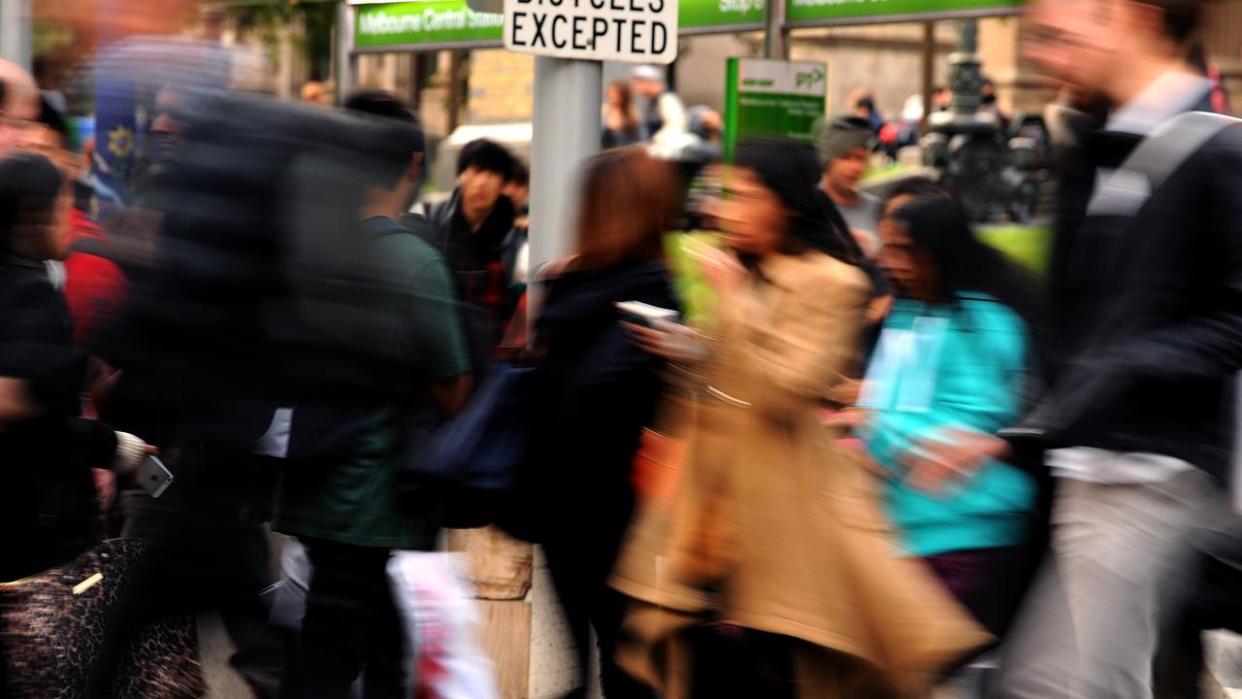Stark numbers show ‘Big Australia’ is coming

A Big Australia is all but locked in, with the latest population forecast revealing up to 46 million people could call Australia home by 2071.
The stark figure, which represents a 77 per cent gain in population in the space of 48 years, is the top end of the Australian Bureau of Statistics’ population forecast for the next four decades.
The “medium” prediction shows the population hitting nearly 40 million by 2071, while the low-end forecast still shows a 30 per cent increase in population from about 26 million in 2023 to 34.3 million in the early 2070s.
The bulge in numbers is driven primarily by an expected endless migration boom.
In a high-end estimate, the ABS expects immigrants to add 14.3 million to the population, with a yearly intake of about 275,000 people.
The middle forecast puts the migration contribution at 11.8 million, with an annual increase of 225,000 people, while the low-end estimate is 175,000 new arrivals each year adding 9.4 million to the population.

In the year ending June 30, 2022, Australia brought in 203,000 immigrants.
And a bigger Australia will come quickly, with the ABS expecting the country’s population to reach between 29.2 million and 30.8 million by 3032, a 15 per cent increase.
The ABS suggests without immigration, Australia’s population would shrink in size due to low birth rates, with all scenarios envisioning a birthrate below the replacement rate of 2.1 per cent.
Without migrants, the ABS states Australia’s population would fall to 23.9 million by 2071.
NSW, Victoria and Queensland are all set to be much more heavily populated in 2071, with NSW to hit 13.8 million at the high-range estimate, 12 million in the middle range and 10.8 million in the low range.
NSW currently has about 8.3 million people.
Victoria will move from 6.7 million at present to 13.7 million at the high end, 11.2 million in the middle and 9.2 million in the low-end estimate.
Queensland will move from 5.4 million at present to 9.7 million, 7.9 million or 6.8 million.
South Australia, meanwhile, will likely register more modest gains, moving from 1.8 million at present to 2.4 million at the high range, 2.1 million in the middle and two million in a low-range forecast.

Australians are also going to get older, with the median age set to rise from 38.5 years at present to between 43.8 and 47.6.
The numbers could add to a growing debate in the country about the appropriate size of immigration, as more Australians grapple with how to afford a home to live in as housing demand continues to outstrip supply.
AMP chief economist Shane Oliver, speaking with Sky News in November, said the country’s recent migration numbers were “way too high” and adding costs to the economy.
“We needed more immigrants to come in, fill up some of those labour shortages that we had coming out of the pandemic, but I suspect that we’ve now gone from a point where we’ve gone from an undersupply to an oversupply,” he said.
“I think we’ve gone to the other point, the other extreme now where it’s actually adding to costs in the economy, whether it’s housing costs, rents of course, and prices generally.
“I think it’s just got to the point where it’s a bit too high, way too high, in fact.”


